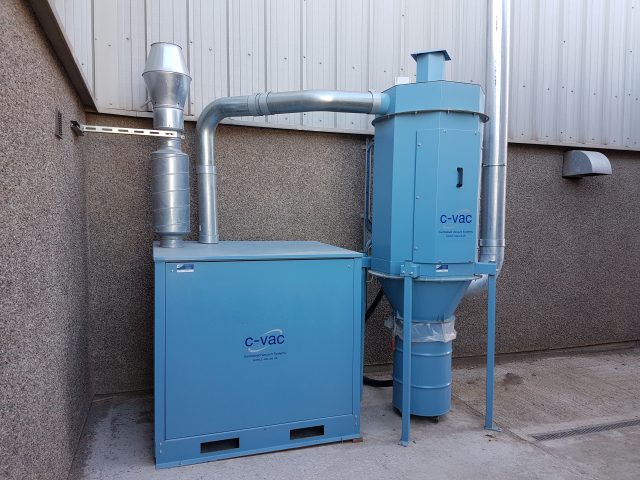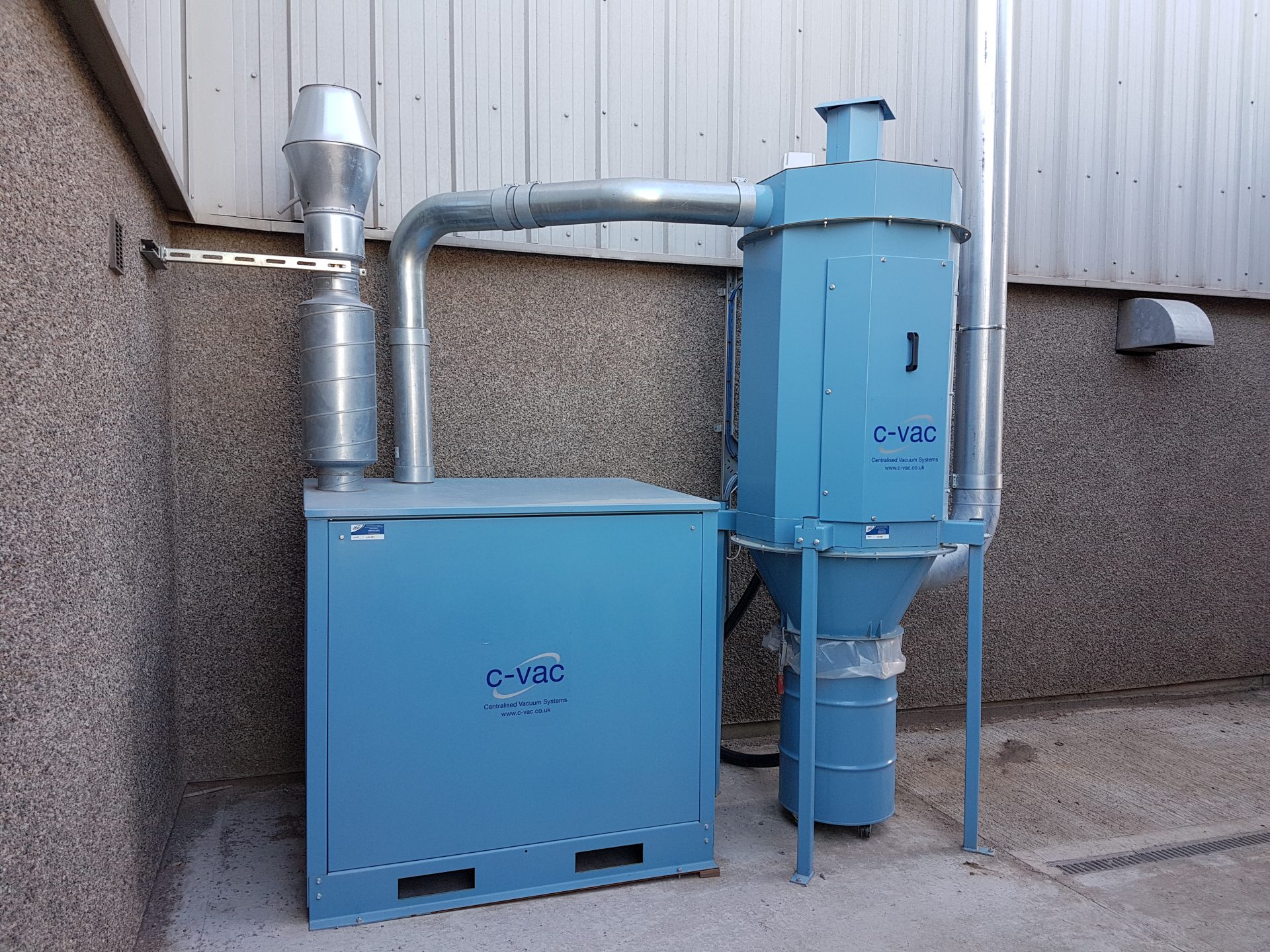Centralised High-Vacuum Welding Fume Extraction System by AES in Aberdeen
In this case study, we explore a high-vacuum welding fume extraction solution installed by AES in Aberdeen. In this facility MIG welding with Mild Steel was taking place with no existing controlled measures for the extraction of weld fume.

Existing Controls
There were no existing controls installed at the site, so AES designed the most effective solution and investigated the workplace for the most efficient installation. The process taking place at the site was MIG welding of large work pieces made from mild steel. The site required a high vacuum welding system to be installed for all 8 welding stations, and to allow production at all stations to be performed simultaneously. The installation also needed to conform with the COSHH 2002 regulations and HSG 258, AES were able to create a custom system with variable speed and performance levels that adjusted to the workload within the facility to consistently provide extraction over and above the required performance whilst being energy efficient.

Solution
AES fulfilled the initial design, consultative advice and site inspection, installation, testing and commissioning of a full high-vacuum welding fume extraction system for a client in Aberdeen. the unit installed was a high-vacuum unit with a cyclone dust separator and fan unit, equipped with anti-static cartridge filters with a 99.9 % degree of separation as standard (BIA Class C). The filters are cleaned with reverse jet pulse compressed air and installed together with a powerful 22kW fan capable of producing an airflow of 2000 m³/h at -23kPA of negative pressure.
The system was fitted with manual valves for at the plug in points which control the performance of the system, and allow all of the welders to work simultaneously. The fan is controlled by an inverter drive, which is set to maintain a steady system pressure for increased efficiency irrespective of the amount of points in use. This technique allows the fan to adjust the airflow and pressure needed when each point is in use, improving electrical energy consumption and providing each point with the needed extraction capacity to capture the harmful welding fumes efficiently. The collection bin for the unit is also installed with an optical sensor to show the operators when it is time to empty the contents of the collection bin.

For the point extraction of each welding station, AES combined portable welding nozzles with magnetic clamps, and extraction arms with extendable wall consoles to allow for extraction throughout the facility for any project. The nozzles provided were specifically designed for high vacuum systems, and come with an in-built silencer to reduce noise levels during operation.
Each hood was also fitted with a safe capture distance label to allow the operators to position the hoods in the most effective position. The positioning of capture hoods are critical to the performance of any LEV system and it is imperative that hoods of this style are positioned as close to the contaminant source as possible. The High Vacuum hood allows the operator to effectively position the hood suing the magnetic base to extract the weld fume safely and efficiently.
With this project AES completed an effective and easy to use installation, with full testing and commissioning packages for this facility, you can see the high vacuum system and magnetic nozzles in operation below during a test weld.
